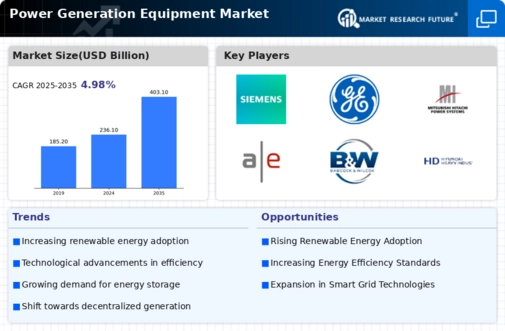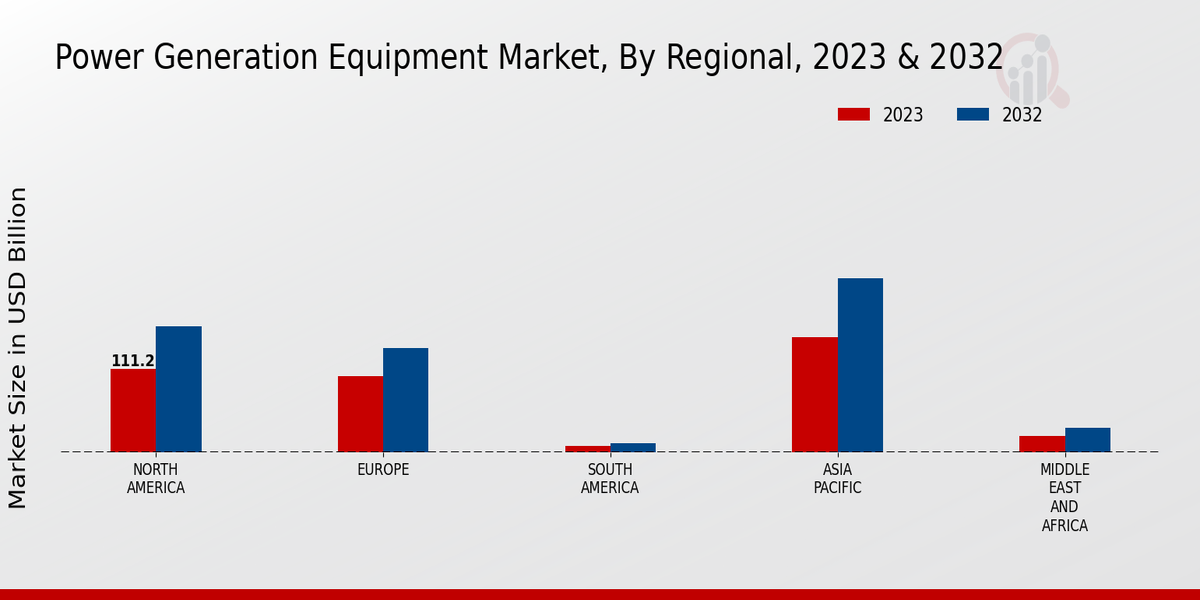Power Generation Equipment Market Summary
The Global Power Generation Equipment Market is projected to grow from 236.14 USD Billion in 2024 to 403.12 USD Billion by 2035, reflecting a robust growth trajectory.
Key Market Trends & Highlights
Power Generation Equipment Key Trends and Highlights
- The market is expected to experience a compound annual growth rate (CAGR) of 4.98% from 2025 to 2035.
- By 2035, the market valuation is anticipated to reach 403.1 USD Billion, indicating substantial growth potential.
- in 2024, the market is valued at 236.14 USD Billion, laying a strong foundation for future expansion.
- Growing adoption of renewable energy technologies due to increasing environmental regulations is a major market driver.
Market Size & Forecast
| 2024 Market Size | 236.14 (USD Billion) |
| 2035 Market Size | 403.12 (USD Billion) |
| CAGR (2025-2035) | 4.98% |
Major Players
Siemens, General Electric, Harbin Electric Corporation, Toshiba Corporation, Metso Outotec, Mitsubishi Hitachi Power Systems, IHI Corporation, Ansaldo Energia, Babcock Wilcox, Hyundai Heavy Industries, Mitsubishi Heavy Industries, United Technologies Corporation, Doosan Heavy Industries Construction, Wartsila, MAN Energy Solutions




















Leave a Comment